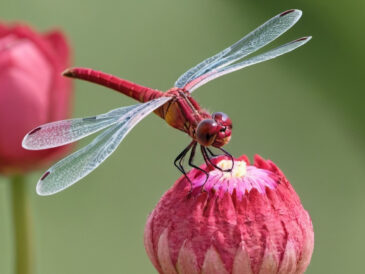What to do:
- Go organic in your gardening practices.
- Use natural pest deterrents like neem oil or insecticidal soap.
- Introduce predator insects like ladybugs for pest control.
Key advice: Always read labels and avoid products containing neonicotinoids.
5. Add Logs, Leaf Litter, and Natural Debris
Why it matters:
Firefly larvae dwell in soil and decaying wood where they hunt snails, worms, and other soft-bodied invertebrates.
What to do:
- Leave fallen leaves in garden corners.
- Add logs, bark, or compost piles to provide larval shelter.
- Create a “wild zone” in a corner of your backyard where nature takes its course.
Don’t worry: A bit of messiness is great for biodiversity!
6. Limit Lawn Mowing and Tilling
Why it matters:
Frequent mowing and tilling disrupt firefly habitats and can destroy eggs or larvae living in the soil.
What to do:
- Reduce mowing frequency—especially in shaded or damp areas.
- Use a push mower instead of a noisy gas-powered one.
- Avoid tilling garden beds deeply.
Extra tip: Let grass grow taller in areas where fireflies are frequently seen.
7. Encourage a Food Chain-Friendly Environment
Why it matters:
Fireflies, particularly in their larval stage, are predators. They eat slugs, snails, and other small soft-bodied creatures. A healthy ecosystem supports their food needs.
What to do:
- Avoid removing all snails or slugs unless they pose a major problem.
- Grow plants that attract other beneficial insects like beetles and spiders.
- Keep your garden pesticide-free to encourage a balanced micro-ecosystem.
Important note: Fireflies themselves are not harmful and don’t bite or sting.
FAQs – Frequently Asked Questions
1. When is the best time to see fireflies in my backyard?
Fireflies are most active at dusk in summer months, especially after a warm, humid day.
2. Do fireflies harm plants or pets?
No. Fireflies are harmless to plants and animals. They do not sting, bite, or damage vegetation.
3. Can I buy fireflies and release them in my yard?
While some companies offer firefly kits, it’s better to create a natural habitat that attracts local species instead of introducing non-native ones.
4. Why are fireflies disappearing?
Light pollution, chemical pesticide use, and habitat destruction are the main culprits. Climate change is also affecting their populations.
5. How long do fireflies live?
Most adult fireflies live for about 2–3 weeks, though their larval stage can last up to a year.
6. Can fireflies live in urban areas?
Yes, but they need green, moist spaces with minimal light pollution and chemical use.
Conclusion
Bringing fireflies back to your backyard isn’t just a visual treat—it’s an act of ecological stewardship. These 7 simple steps don’t require a massive investment, just a willingness to create a small, natural sanctuary. As your garden glows with firefly magic, you’ll not only enjoy their beauty but also contribute to preserving a species that’s vanishing in many parts of the world. Let your backyard be a beacon of light—for them and for the planet.




